
Art in Alternative Spaces

Art in Alternative Spaces
presents
Día de los Muertos
offering a community Ofrenda
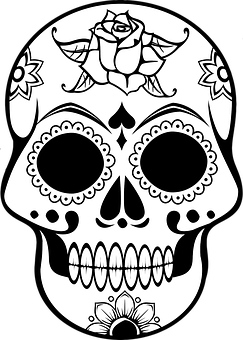
on exhibition at
Devonshire Cultural Center Gallery
4422 Greenwood St Skokie, IL 60076
In Complement to Skokie Park District's Day of the Dead Festival
Exhibiting Artists
Tiger Lily Cross, Fletcher P. Hayes, Kim Laurel, Debra Nichols, Yvonne Pitts, Jan Repa, Juan Roman and Christopher Schneberger
FREE Artist's Reception:
Friday, November 1, 2019 (6 pm - 8 pm)
On exhibition through November 6, 2019
Admission to the exhibition is FREE.
The Center’s regular viewing hours are Monday - Friday 8:30 am - 9pm;
Saturday and Sunday 8:30 am - 6 pm.
DEVONSHIRE COMMUNITY OFRENDA
Día de los Muertos or Day of the Dead is a sacred day in which people reflect on the memory and the souls of those who may not be physically present in their lives, but are still important to them. In Latin cultures, the celebration is traditionally celebrated each year on November 1 (All Saints Day) and November 2 (All Souls Day).
We welcome visitors of all nationalities and religions to the Devonshire Gallery to place a photograph, momento or object of remembrance on our temporary Community Ofrenda table inside the Gallery.
Lit candles or perishable food is not permitted due to safety.
Please leave copies of photographs only. Unfortunately, photos, Momentos and Objects left at our Ofrenda will not be returned.
What is Day of the Dead/Día de los Muertos?
In Latin cultures, Day of the Dead is celebrated each year on November 1st (All Saints Day) and November 2nd (All Souls Day) with food, drink, music, and dancing in thankfulness for life and memories of the departed. It has nothing to do with Halloween, scary costumes or scary decorations around your house. Día de los Muertos is a sacred day in which people reflect on the memory and the souls of those who may not be physically present in their lives, but are still important to them. From pre-Columbian times, El Día de los Muertos has been celebrated in Mexico, as well as other Latin American Countries. This is a very special ritual when the living remember their departed relatives and loved ones. It is believed that the spirits of the dead visit their families on November 2, 2019. The Makeup and Dress The famous skull makeup (calavera) is a very important visual symbol during Día de los Muertos festivities. These are not macabre and are not intended to be scary. On the contrary, the skulls are applied to the face using very colorful paint and are meant to represent our mortality in a united way. You can paint your face during Day of the dead festivities if you wish, but remember, this isn’t a Halloween mask and care should be taken to create the authentic calavera look. Remember to be informed and culturally respectful to the tradition when dressing for Day of the Dead festivities. If you choose to celebrate the Day of the Dead, please respect the traditions of the ceremony and the spirit in which it was created.
Food and Drink (OFRENDA)
In order to celebrate Día de los Muertos, families create altars inside their homes and/or gravesites and decorate them with offerings. A traditional ofrenda includes the four elements of wind, fire, water and earth, represented through papel picado (wind), candles (fire), beverages (water) and flowers (earth). Other elements included in a traditional altar are personal belongings or any items that honor your loved one. Pan de muerto (bread of the dead), shapes of skulls and figures, candles, incense, marigolds (Cempazuchitl) and photos of the departed are arranged on the altar. Special foods are prepared to honor those who have departed. Food items are placed on the ofrenda for the deceased to come back for one night to drink and eat their favorite foods again. You too can set up an altar in your home and celebrate your lost family members. Just remember, this is not a time to mourn. It is a time to celebrate the life of your departed loved one in a positive and spiritual way. Did grandma enjoy making hot chocolate when she was alive? Place the hot chocolate on the altar along with other objects that remind you of her life and in thanks for her contributions to your life.
What is a Sugar Skull?
Sugar skulls are made from a paste called alfeñique, which is a mixture of sugar, hot water, and lemon—among other ingredients—that creates a moldable mass akin to caramel. It is not meant to be eaten. It is for display only. This paste allows for artisans to mold it into the shape of a skull to later decorate it for display. Small skulls are usually meant to represent children, while the bigger skulls represent adults and elders. Sugar skulls are decorated with names of the departed and have colored icing. It is a colorful celebration of the lives led by those who are now gone. Red is used to represent blood; orange to represent the sun; yellow to represent the Mexican marigold (which represents death itself); purple is pain; pink and white are hope, purity, and celebration; and finally, black represents the Land of the Dead. Giving someone who’s still alive, whether they’re a friend or a family member, a sugar skull with their name on it is also a regular custom around Día de Muertos because that person is meaningful to you, and so you’re reserving a spot for them in the underworld once they’ve gone on to the life after death. Día de Muertos is a celebration of life, and what better way to celebrate it than bringing together those of us who remain here and those who are dancing in the spiritual life?
Who is Frida?
From Wikipedia, the free encyclopedia
Frida is a favorite subject matter of many artists. Frida Kahlo (Spanish pronunciation: [ˈfɾiða ˈkalo]; born Magdalena Carmen Frida Kahlo y Calderón; 6 July 1907 – 13 July 1954) was a Mexican painter known for her many portraits, self-portraits, and works inspired by the nature and artifacts of Mexico. Inspired by the country's popular culture, she employed a naïve folk art style to explore questions of identity, postcolonialism, gender, class, and race in Mexican society. Her paintings often had strong autobiographical elements and mixed realism with fantasy. In addition to belonging to the post-revolutionary Mexicayotl movement, which sought to define a Mexican identity, Kahlo has been described as a surrealist or magical realist. Born to a German father and a mestiza mother, Kahlo spent most of her childhood and adult life at La Casa Azul, her family home in Coyoacán, now publicly accessible as the Frida Kahlo Museum. Although she was disabled by polio as a child, Kahlo had been a promising student headed for medical school until a traffic accident at age eighteen, which caused her lifelong pain and medical problems. During her recovery, she returned to her childhood hobby of art with the idea of becoming an artist. Kahlo's interests in politics and art led to her joining the Mexican Communist Party in 1927, through which she met fellow Mexican artist Diego Rivera. The couple married in 1928, and spent the late 1920s and early 1930s travelling in Mexico and the United States together. During this time, she developed her artistic style, drew her main inspiration from Mexican folk culture, and painted mostly small self-portraits which mixed elements from pre-Columbian and Catholic beliefs. Her paintings raised the interest of Surrealist artist André Breton, who arranged for Kahlo's first solo exhibition at the Julien Levy Gallery in New York in 1938. The exhibition was a success and was followed by another in Paris in 1939. While the French exhibition was less successful, the Louvre purchased a painting from Kahlo, The Frame, making her the first Mexican artist to be featured in their collection. Throughout the 1940s, Kahlo participated in exhibitions in Mexico and the United States, and also worked as an art teacher. She taught at the Escuela Nacional de Pintura, Escultura y Grabado "La Esmeralda" and was a founding member of the Seminario de Cultura Mexicana. Kahlo's always fragile health began to decline in the same decade. She had her first solo exhibition in Mexico in 1953, shortly before her death in 1954 at the age of 47. Kahlo's work as an artist remained relatively unknown until the late 1970s, when her work was rediscovered by art historians and political activists. By the early 1990s, she had become not only a recognized figure in art history, but also regarded as an icon for Chicanos, the feminism movement and the LGBTQ+ movement. Kahlo's work has been celebrated internationally as emblematic of Mexican national and indigenous traditions and by feminists for what is seen as its uncompromising depiction of the female experience and form.
Tiger Lily Cross
Day of the Dead -
Acrylic/Mixed Media on Canvas 8 x 10" $100
Tiger Lily
is a self taught artist who
works with a variety of
mediums including watercolor,
oil, acrylics, pastels,
graphite, colored pencils,
paper, cardboard boxes and wood.
She also enjoys plein air
painting.
Her artwork has been exhibited
in galleries in Chicago, Oak
Park, Skokie,
Blue
Island, Illinois, and also
in LaGrange, Texas and Oahu,
Hawaii. Fletcher P. Hayes
Not Everyone Witnessed It
Limited Edition Giclee Print 20.75" x 23.25"
Fletcher Hayes grew up in a house chock-full of oil paintings by his mother's
brother Douglas Reynolds. He first learned to draw from encouragement from his
talented sister Susilee, followed by junior high and high school teachers Nina
Ross Gessler and Gary Kerr. His father Charles, a professor of architectural and
engineering drawing, taught him how to draw with three-point perspective. Hayes
received his Bachelor of Fine Arts and Master of Arts degrees from the
University of Alabama at Tuscaloosa. There he studied painting with Alvin Sella,
design with Richard Brough, sculpture with Art Oakes, printmaking with Richard
Zoellner, ceramics with Dr. Richard Engle, photography with Thomas Barnes, art
history with Dr. Joseph Bolt and drawing with Edith Frohock who would stop him
in the midst of a drawing saying, "Don't make another mark – it's finished,"
followed by, "Put it aside and start a new drawing."
As part of his masters degree, Hayes attended the Blossom Kent Art Program at
Kent State University. Guest instructors included sculptor Richard Hunt,
printmaker Nathan Olivera and other nationally recognized artists. He later
studied lithography in adult education classes at the School of the Art
Institute of Chicago with Ellie Specht, and oil painting with Ginny Sykes. A
member of the Chicago Alliance of Visual Artists and the Elmhurst Artists'
Guild, Hayes is frequently invited to jury art exhibitions in the region.
Hayes' artwork has been exhibited at institutions including the Museum of
Contemporary Art, the Merchandise Mart, the Beverly Art Center, Old Town Art
Center and Irish American Heritage Center, and galleries such as Ann Nathan,
Mars Gallery and Jackson Junge Gallery, and many others. In addition to solo
and group exhibitions, Hayes’ collaborations with artist Kim Laurel have
produced two-artist shows and installations. As curators the pair has organized
and brought to life several theme-specific group exhibitions of up to 50
artist-participants in cooperation with art galleries across the region. Hayes
makes his living as a visual artist after a career of art direction and graphic
design at local and international advertising agencies.
Artist’s Statement
An important story lives on as myth after all the witnesses have departed. My
artistic goal is to bring to life a marvelous moment in time. But what time and
what place? My images explore the dark corners of my off-kilter daydreams.
Kim Laurel
Runt and Stillborn
(Litter-mates) Mixed media 14" x 9" x 1/4" each (set of two) $475 “My work is symbolic commentary on
sociological and environmental issues in a complex and alienating society. The
themes are inadequacies in society posed as allegory. Primal experiences, nature
and personal identity for example, so basic to our understanding of existence,
are symbolized in this allegorical world. Contemporary cultural icons and words
are used to enhance or countermand the associations of the figurative images and
symbols, emphasizing the dichotomy between physical self survival and spiritual
isolation. Utilizing printmaking and collage as an extension of drawing and
painting, I have found that in the realm of two dimensional expression that
mixed media collage is the most authentic and subjective tool to express my
voice. For me Art is about persistence, a life study and discipline. It is part
of my life. If you pursue it a lot or a little at any one time makes no
difference...just return to it again and again. Let the presence of touch back
into your life and embrace the new with reference to all that you have learned."
________________ Kim Laurel is a Chicago based mixed media
artist, illustrator and graphic designer and has exhibited in the United States,
Canada and England since 1977. She studied at Oberlin College, the Cleveland
Institute of Art, Cleveland State University and Illinois State University. Her
works of art are part of various public and corporate collections. Laurel's
recent curatorial work includes: Her Way With Print, Fletcher Hayes & Kim Laurel
Collaborations: Black/White/Gray, Element Flux, Ethereal Fauna: The Artistʼs
Muse, Tool Box Flower Box, Integrant Element Lab, Redux Loop, Wild Things and
Beyond. She is a long standing member of Woman Made Gallery, the Mid America
Print Council, the Chicago Printmakers Collaborative and the Chicago Artistʼs
Coalition. Kim's art is exhibited in many Chicago galleries and institutions and
is represented by the Workshop Print Gallery - Chicago Printmakers
Collaborative, Chicago, Il. She teaches private and public classes at the
Chicago Printmakers Collaborative. Her work is included in the recent 2015
exhibitions and publications: "Convergence: The Poetic Dialogue Project" at the
Ukrainian Institute of Modern Art and "City Creatures" at the Peggy Notebaert
Nature Museum and the publication "City Creatures" by the Center for Humans and
Nature, University of Chicago Press. In 2016 her works are featured in the group
exhibition "Serial and Sequential: A Printmaker's Performance" at Argonne
National Laboratory. Debra Nichols
Debra is a
self-taught artist and curator.
Her artwork has been exhibited at the Devonshire Cultural Center and at the
Emily Oaks Nature Center in Skokie,
IL. She is a resident of
Skokie.
MEMORIAL BOX
Losing a loved one is never easy.
I create memorial boxes with momentos that remind me of a loved one who has
passed on.
While it does not bring back my loved ones, I am
comforted by the meaningful objects within these boxes.
These memorial boxes can then
be passed on to the next generation.
Debra's installation
Who Do Your Remember?
asks visitors to write the
names of their loved ones on the board. Debra has also made custom
Memorial Boxes for clients. If you would like for Debra to create a
Memorial Box for your loved one (human or pet) using your own personal momentos,
please contact
anatomicallycorrect2022@gmail.com to set up a consultation.
Yvonne Pitts
I am a Impressionistic Abstract Mixed Media artist.
Painting is my self-expression, giving me endless subject matter to work with.
Painting, for me, is a form of therapy that takes me to a place all my own.
My abstract world provides a peaceful calmness in some of the most stressful
times. I create whatever my emotion dictates, producing emotional abstract
images. Artist Yvonne Pitts is a very
unique artist that has had the opportunity to share her work as a featured
artist in various galleries and coffee shops in the Chicagoland area with
aspirations to reach other venues and locations. Yvonne is a native of North
Chicago, IL. Growing up, Yvonne always had an interest in the arts.
Faces are also a constant in many of Yvonne's pieces, sometimes abstract without
features but always recognizable as a face. Her imagery has been described as
whimsical, fun and entertaining. Yvonne’s color choices are vibrant with
outlines of bold black. Even in primarily black and white pieces there are
always touches of color on the canvas.
Sugar Skull Green Acrylic & Mixed Media on
Canvas
12 x 12" $ 30 Sugar Skull Turquoise Acrylic & Mixed Media on
Canvas
12 x 12" $ 30
Sugar Skull
Purple Acrylic & Mixed Media on
Canvas
12 x 12" $ 30 Sugar Skull
Burgundy Acrylic & Mixed Media on
Canvas
12 x 12" $ 30
Sugar Skull
White Acrylic & Mixed Media on
Canvas
12 x 12" $ 30 Sugar Skull
Pink Acrylic & Mixed Media on
Canvas
12 x 12" $ 30
Sugar Skull
Blue Acrylic & Mixed Media on
Canvas
12 x 12" $ 30 Sugar Skull Gold Acrylic & Mixed Media on
Canvas
12 x 12" $ 30
Sugar Skull Purple/Gold Acrylic & Mixed Media on
Canvas
12 x 12" $ 30 Sugar Skull
Frida Acrylic & Mixed Media on
Canvas
12 x 12" $ 30
Sugar Skull
Marigolds Acrylic & Mixed Media on
Canvas
12 x 12" $ 30 Sugar Skull Yellow Acrylic & Mixed Media on
Canvas
12 x 12" $ 30
BANK Sugar Skull - White Acrylic & Paper Mache $ 30 (stand not included) BANK Sugar Skull - Gold Acrylic & Paper Mache $ 30 (stand not included)
BANK Sugar Skull - White Acrylic & Paper Mache $ 30 (stand not included) BANK Sugar Skull - Turquoise Acrylic & Paper Mache $ 30 (stand not included)
BANK Sugar Skull Large - Remember Acrylic & Paper Mache $ 80 Jan Repa Jan Repa was born in the area of
Zakopane, Poland, home of traditional glass painting, weaving and wood carving.
He was inspired by his family to pursue art (his father was a wood carver and
carpenter and his mother was weaving traditional highlander rugs and wall
hangings). Jan received a degree in Fine Arts
from Antoni Kenar Art School in Zakopane, Poland. He also studied
oil painting at the American Academy of Art in Chicago, IL. In addition to his paintings, Jan
works as a freelance sculptor creating clay sculptures for casting in resin,
concrete, plaster & bronze. He also works for Orlandi Statuary
creating custom statues. His life-size Mastodon Statue can be seen in Phillips
Park in Aurora, IL and his bronze statue of Abraham Lincoln can be found on the
NE corner of Lincoln/Dixie Crossroads in the City of Chicago Heights, IL.
Another life size statue “Community” is installed outside of the Grand Avenue
Community Center in Western Springs, IL.
Monarchy Oil on Glass 19.5 x 23.5" $400
Sharp Gate Madonna Oil on Glass
12 x 14" $200
Tree Chapel Oil on
Glass 16 x 20" $500
Rainbow Bridge Oil on Glass
5.5 x 7.5" $65
As an artist, born American in Puerto Rico and
raised in Chicago, I’ve managed to preserve a cultural foothold in
both places. This, of course, is facilitated be regularly visiting
the island. In the reality of globalization, the challenge, at this
time, becomes: How do you preserve the Puerto Rican culture and
advance it for the succeeding generations, or, ANY other culture
(Think about it) in the mosaic that Is America. My goal is to bring
the traditional Vejigante mask into a 21st century expression of
art. I make traditional and contemporary style Puerto Rican
Vejigante carnival masks. Two ,and soon to be 3, of my masks are in
the collection of the Museum of Anthropology at the University of
British Columbia in Vancouver, Canada, as well as, in the local
Chicago museums of the National Museum of Puerto Rican Arts and
Culture, and, The Puerto Rican Arts Alliance. I strongly believe
that the arts are important, and, mentoring, especially our
children, is a way to preserve our various cultural and artistic
traditions. h Huracán María
Paper Mache, Mixed Media, Acrylic 21 x 17 x
18" $850 VEJIGANTE MASK
What is a Vejigante ?
The vejigante is a centuries old gargoyle-like representation which
first appeared in celebrations as far back as in Gothic Spain, and,
eventually spread throughout the Spanish empire to other Latin
American countries. Vejigantes were originally seen during Carnival
and were intended to scare the general public back to attending
church during the Lenten season and to scare evil spirits away.
It represents the
struggle between good and evil. This is contrary to the notion that
it represents something purely satanic. Vejigantes can take the form
of grotesque dragons, animals, or like a diabilto. In certain
traditional religious oriented celebrations in Spain, the diablo or
“diablito” imagery is used in which the devil is the center of
attention and is pelted mercilessly with produce, some of it rotten,
as a sense of punishment. The costume worn with the mask is baggy
and clown-like with a hooded cape.
The Puerto Rican
style mask is made primarily of paper mache, or, the outer coconut
husk. In Puerto Rico, the vejigante mask has been further influenced
by the African and Taino Indian cultures. This can be seen in the
carnival mask making tradition incorporated in the vejigante masks
carved from the outer shell of coconuts by artisans in Loiza. Along
with continuing to be seen during Carnival, vejigantes can also be
seen in certain other local Puerto Rican festivals and parades that
celebrate their culture, such as in Loiza during the Festival of
Santiago Apostal, or, the Festival de las Mascaras in Hatillo. The
name “vejigante” comes from the balloon-like object that is
traditionally carried to playfully strike spectators. It was
originally a cow’s “vejiga” , which is Spanish for “bladder”. The
bladder was inflated, dried, and could be filled with pellets, so as
to make noise.
It is a folk
tradition that has been mentioned as far back as in 17th century
Spain when Cervantes wrote “Don Quixote”. Today, the bladder has
been mostly replaced by a plastic balloon. Once an islandwide sight
in Puerto Rico during festivities prior to Lent, vejigantes are now
mainly seen at 3 major festivals there: The Festival of the Masks in
Hatillo, The Festival of Santiago Apostol in Loiza, and Carnaval in
Ponce. They also appear in the mainland “Fiestas Patronales”
celebrated by the diaspora community of Puerto Ricans living in
places like New York City, Chicago, Connecticut, Florida, Hawaii,
and elsewhere a high concentration of Puerto Ricans are living.
As of 2011, there are
at least 1 million MORE Puerto Ricans living “afuera”, or, “ outside
of the island of Puerto Rico”, than are living in the island of
Puerto Rico itself.
Christopher Schneberger is a photographer in Chicago. His work has been
exhibited nationally and internationally. Recent exhibitions include: The Los
Angeles Center for Digital Art and the Annenberg Space for Photography, both in
Los Angeles; Dorsky Projects in New York City, Geocarto International in Hong
Kong, and Printworks Gallery in Chicago where he is represented. He is two-time
recipient of an Illinois Arts Council individual artist grant.
He is
adjunct faculty at Columbia College and the College of DuPage where he was named
the College-Wide Outstanding Adjunct Faculty Member for 2018. He is a founder
and board member of Perspective Gallery in Evanston, IL. He has curated
several exhibitions of photography including Realms, This Particular
Patch, and Re:Place. He has been a presenter at the Society for
Photographic Education’s midwest regional conference, and a visiting artist at
numerous colleges including: Kendall College of Art, Delta College, and Western
Michigan University. He holds a BFA from the University of Florida and an MFA
from Indiana University.
The Strange Case of Dr. Addison and the Crosswell
Twins
Transient Dr. Charles Addison disappeared In the
spring of 1908. The noted botanist, amateur zoologist, and photographic
portraitist, had been making a series of images of a young girl named Regina
Crosswell. Regina’s twin sister, Lydia, had died in the winter, though the
circumstances were unclear. Dr. Addison, however, became convinced that Lydia
Crosswell had not entirely departed from our earthly plane. Addison first
photographed the Crosswell twins the previous fall when their father brought
them to Addison’s studio. Addison made head-and-shoulders portraits of the
girls. When Lydia Crosswell died the following January, Dr. Addison was summoned
to the Crosswell estate to make a memorial portrait of Lydia in repose. Several
months later, Mr. Crosswell requested Addison make a portrait of the entire
family. Apparently, Regina Crosswell had been unable to let go of her sister and
claimed to still see her and play with her. Mr. Crosswell felt that if a new
portrait was made it might help Regina to accept the family as it then existed,
without her sister. The Crosswell family, including governess Katharine Rennick,
came to Addison’s studio and had their portrait made. However, when developing
the glass plate negative, Addison discovered one extra figure in the image. To
his great disbelief the figure appeared to be that of Lydia Crosswell. When
shown the image, Mr. Crosswell accused Dr. Addison of being a charlatan, and
promptly threw him off the property. This served only to intrigue Addison who
sought to investigate and either prove or disprove the phenomenon. He arranged
several meetings with Regina Crosswell to photograph her further at several
locations including the estate, his studio, and the cemetery where Lydia was
buried. To his astonishment, each time Addison photographed young Regina
Crosswell, the image of her sister appeared when the photographic plate was
developed. Ever the scientist, Addison tried several technical means and
experiments to discern the truth. One of those methods was stereo photography
with gave a three-dimensional image. Addison reasoned that if the spirit was
false, it would not have visual depth. After numerous images all showed Lydia’s
image, Addison began to accept the presence of her spirit. He then began to
question her demise. Addison kept an occasional diary of his investigation, and
it reveals a curious man searching for clues, motives, and suspecting several
different individuals of foul play. The diary ends abruptly with an entry that
indicates Addison made a discovery. But what he discovered remains a mystery as
Addison disappeared and was never seen again. We have re-created the studio of
Dr. Charles Addison as it existed in 1908, based closely on the photographs we
have uncovered. Hanging in this studio are all the known photographs Addison
made of Regina Crosswell. The diary that Addison kept is displayed for those
interested, as well as some of the actual furniture from the studio.
Playing at the Typewriter
photography, digital pigment print
framed
16 x 20"
$650
(from
Dr. Addison and the Crosswell Twins)
At the Gate, Crosswell Estate Garden
photography, digital pigment print
framed 16 x 20" $650 (from
Dr. Addison and the Crosswell Twins)
Reflecting Pond
photography, digital pigment print
framed 16 x 20" $650 (from
Dr. Addison and the Crosswell Twins)
Lydia Comforts Regina
photography, digital pigment print
framed 16 x 20" $650 (from
Dr. Addison and the Crosswell Twins)
A Prayer for Lydia
photography, digital pigment print
framed 16 x 20" $650 (from
Dr. Addison and the Crosswell Twins) Glimmer: The Haunting of the
Graham House Transient John and Sarah
Graham found me after seeing one of my exhibitions and wanted to ask me about
the ghosts I had been researching. They seemed fixated on how the ghosts in my
shows were visible in physical space. I asked why. “See,” Sarah said, “Our ghost
lives in the mirrors.” Sarah explained to me that the apparition of a young
woman appeared to the family, but only in reflections. I was very skeptical at
first, as I hear ghost stories all the time. The truth is, I really didn’t
believe in ghosts. After a lengthy conversation about my doubts and their
privacy, John and Sarah trusted me, and invited me to photograph in their home.
At first I didn’t see any girl. Was my skepticism founded? “She doesn’t know you
yet,” John said, “Sometimes I wish she didn’t know me.” Sarah pleaded with me to
come back a few times, and I did. After several visits I was about to write this
off as another hoax, when one evening Sarah called from the bathroom. “She’s
here!” I ran to the bathroom to find a young woman in the mirror, as if she were
standing next to Sarah. I said to Sarah, “I’m moving in.” To my surprise, the
Grahams agreed, and over the next two months they granted me unprecedented
access to their house, and their lives. These are my photographs from that time.
The Grahams bought their three story Victorian in 2002. There was nothing
unusual until Kevin was seven and surprised Sarah with a question, “Mommy, who’s
the girl in the mirror?” Soon all the Grahams could see the girl, and before
long she became commonplace. She would silently walk into a room, only visible
through a reflection. She was there, yet not there. I witnessed her numerous
times while staying at the house. Any attempt to speak to her was unanswered.
She would leave the room if I tried to touch her. She wasn’t transparent, as
ghosts are sometimes pictured, but she seemed shimmery and slightly out of
focus. The Grahams are private (their names have been changed) and have told
only close family and trusted friends about their housemate. Kevin is a quiet,
shy boy who keeps to himself. Ashley is a teenager however, and has had friends
over. “We’ve asked her friends to not tell anybody,” From my observation, her
friends couldn’t care less. Ashley asked me one night, “Can you make her go
away?” One day I noticed that the girl whispered in Kevin’s ear. I asked him
later if he could hear the girl speak. He said no, but blushed and looked away.
Sarah seemed to be more at ease when the girl was around. John seemed less
interested, even uncomfortable in her presence. He told me, “A lot of times I
just ignore her, but sometimes you can’t.” The records at the historical society
show the house was built in 1890, but there is no record of a girl her age
living there in the early years. Epilogue After two months of photographing, I’d
become quite fond of the girl, but felt my shooting had run its course, and I
moved out. Sometime later Sarah phoned me to say they had decided to sell the
house, and that she and John were divorcing. “I’d keep the house if I could, but
I can’t.” Sarah said. I could hear her stifling tears over the phone. “The
hardest part,” she said, “is that I can’t take her with me.” After the house
sold, I called the new residents under the guise of being from their realtor’s
agency. I asked them if everything was okay with the house. “The plumbing is a
bit of a mess,” the man told me. “Well,” I said, “please call me if anything
else shows up.”
Kevin's World
photography, digital pigment print
30
x 40" $1,800
(from
Glimmer: The Haunting of the Graham House)
Ashley in her Bedroom with Friends
photography, digital pigment print 21
x 28" $1,200
(from Glimmer: The Haunting of the Graham House)
Ashley in her Bathroom
photography, digital pigment print 30 x
40" $1,800
(from Glimmer: The Haunting of the Graham House)
Kevin on the Landing
photography, digital pigment print 21
x 28"
$1,200
(from Glimmer: The Haunting of the Graham House)
Sarah and John After Work
photography, digital pigment print 21
x 28"
$1,200
(from Glimmer: The Haunting of the Graham House)
The Grahams at Dinner
photography, digital pigment print 21
x 28"
$1,200
(from Glimmer: The Haunting of the Graham House)
© 2019 -
2023 Anatomically Correct. No text or photograph contained in the pages
of this website may be reproduced without the expressed written permission of
the artist and/or Anatomically Correct. Founded in 1991, Anatomically Correct is a not-for-profit
organization dedicated to showcasing works by artists in alternative spaces in a
combined effort to educate, diversify, and promote community awareness of the
visual and performing arts.
This project is sponsored in part by the Illinois Arts Council, a state
agency and the Skokie Park District.
Anatomically Correct
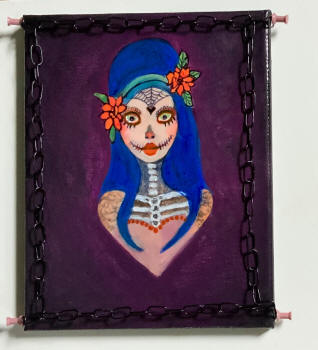

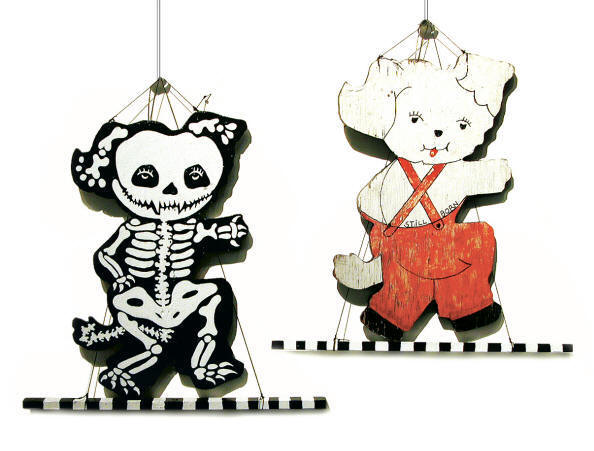
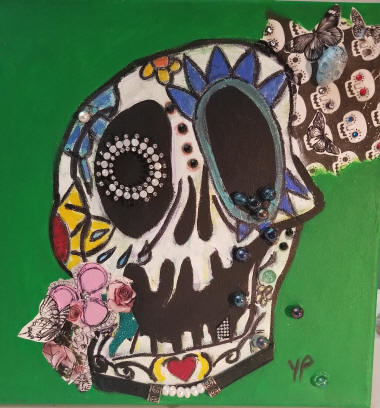

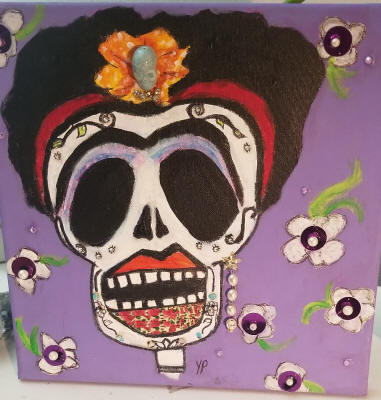
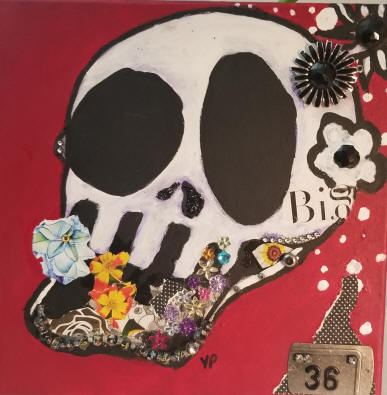
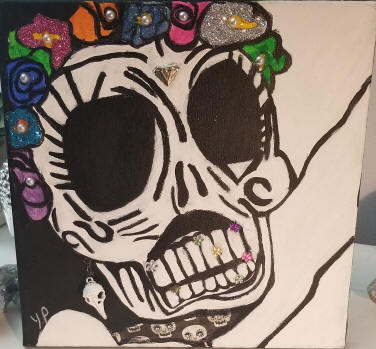
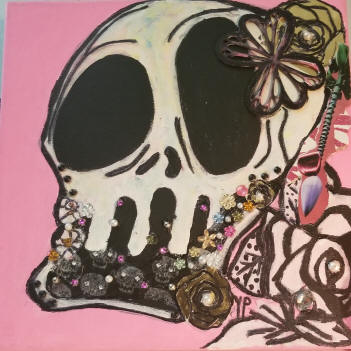

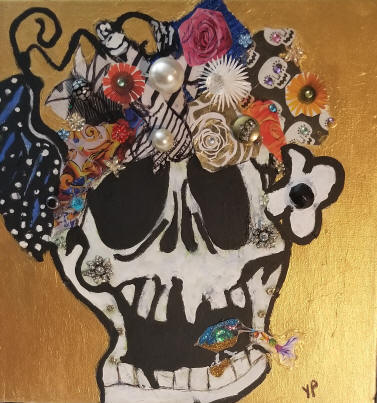
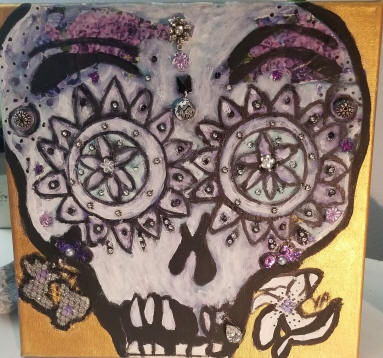



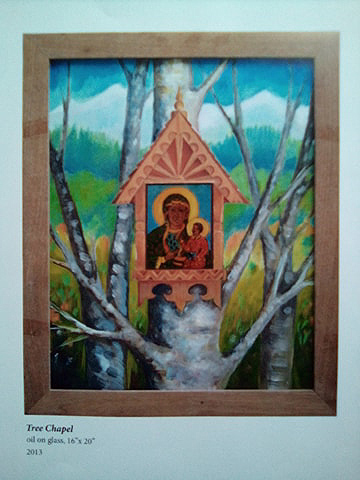

Juan Roman
Christopher Schneberger

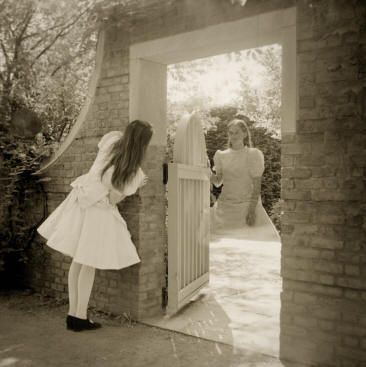
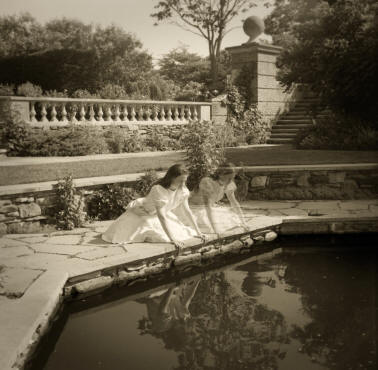
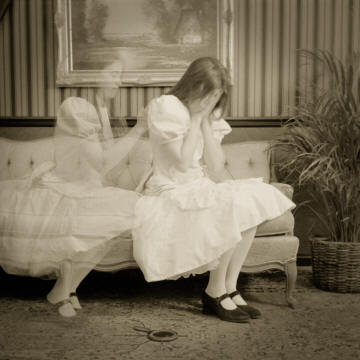
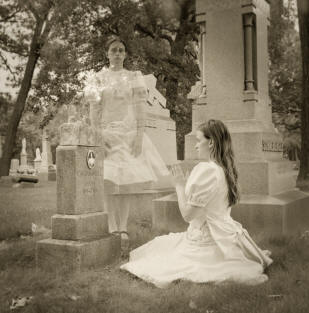
Image Coming Soon

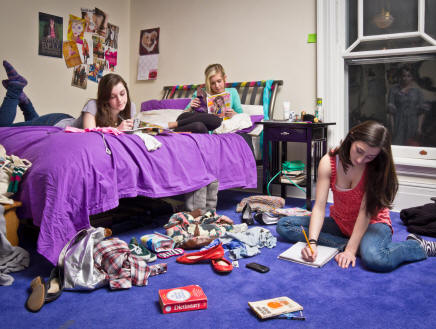

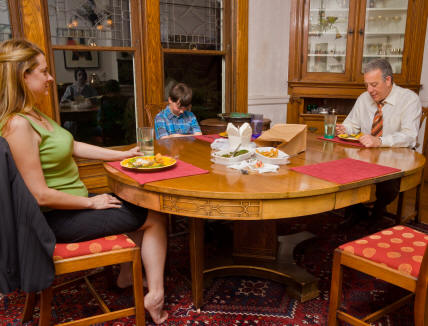
For more information or to purchase artwork, please
contact: